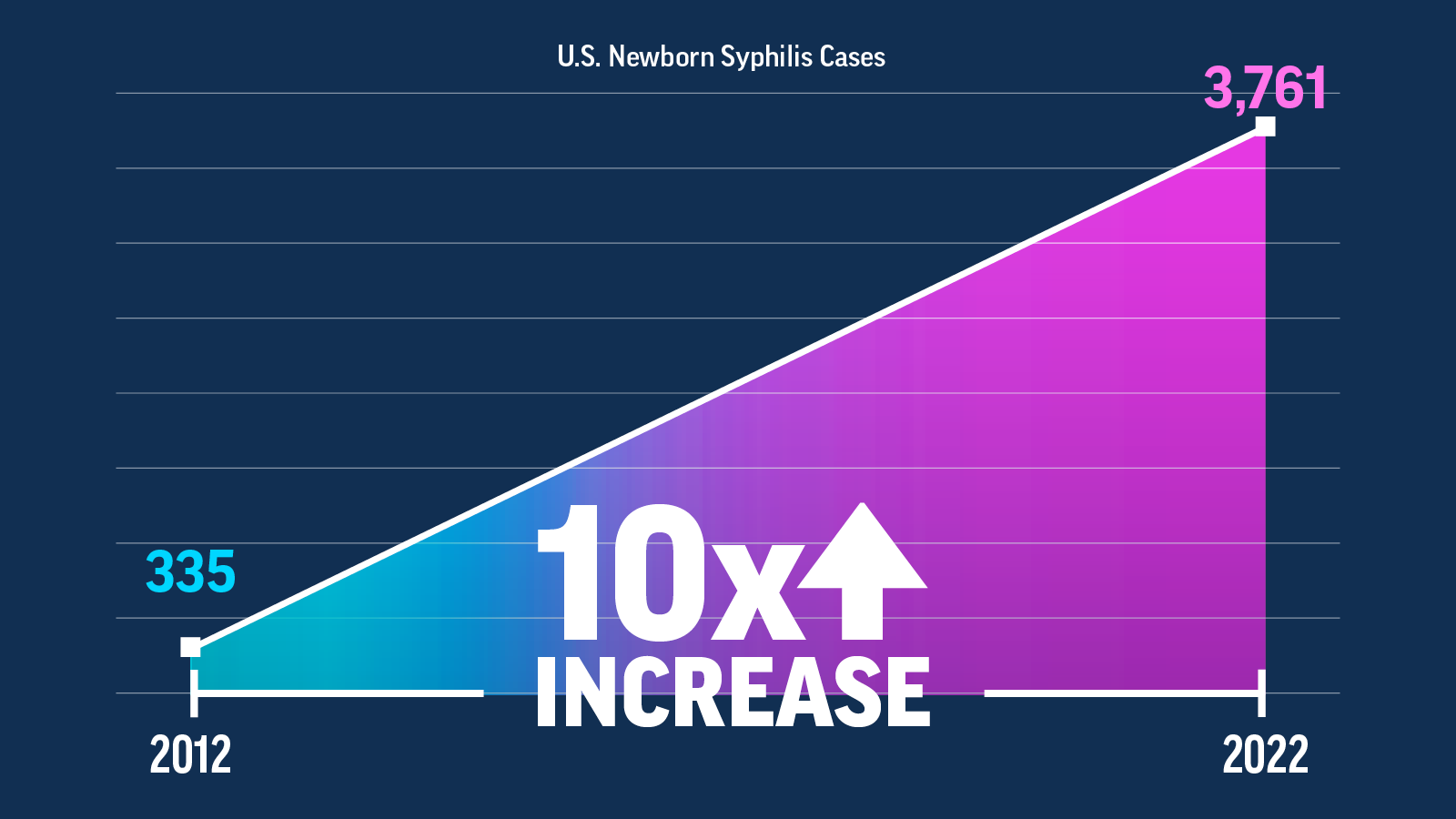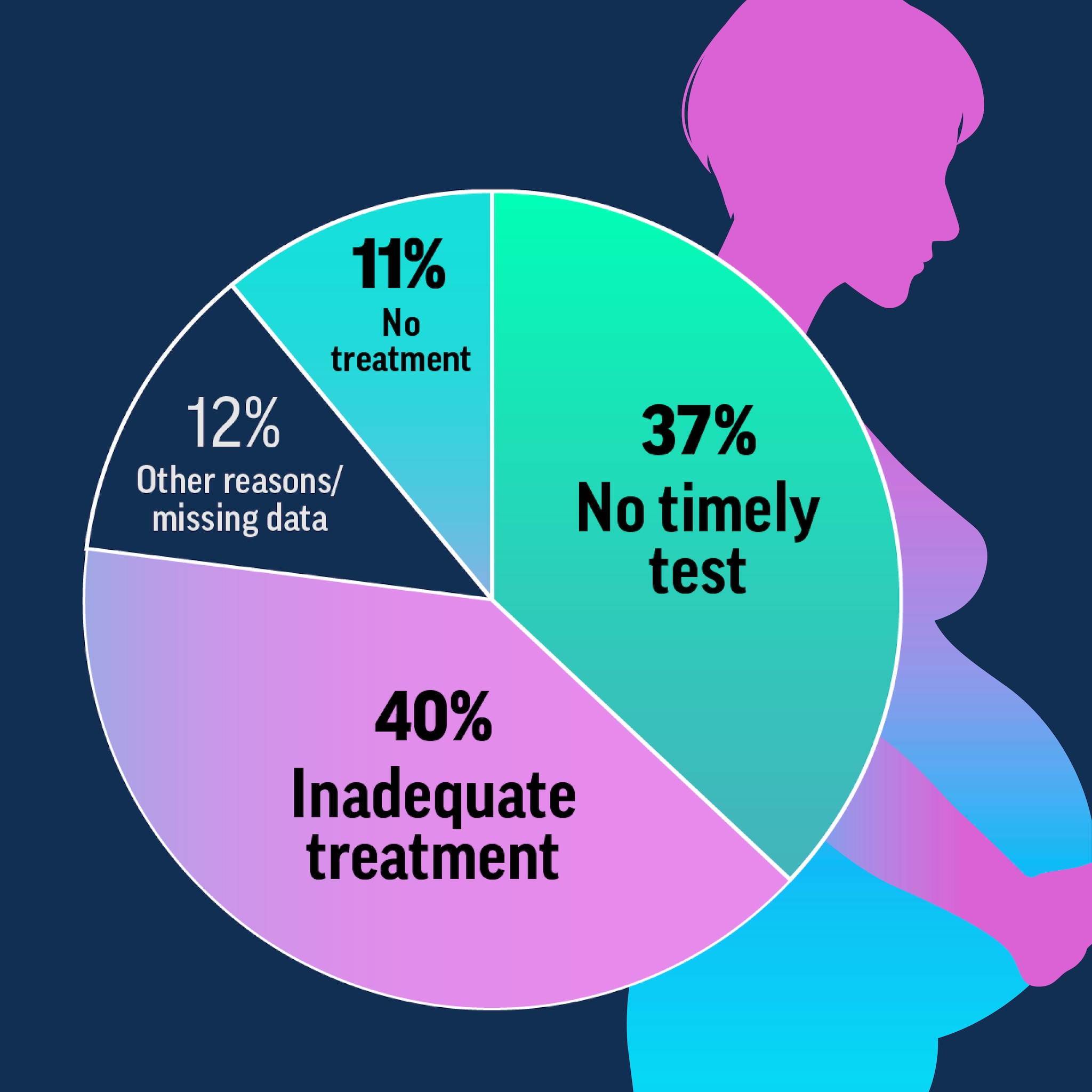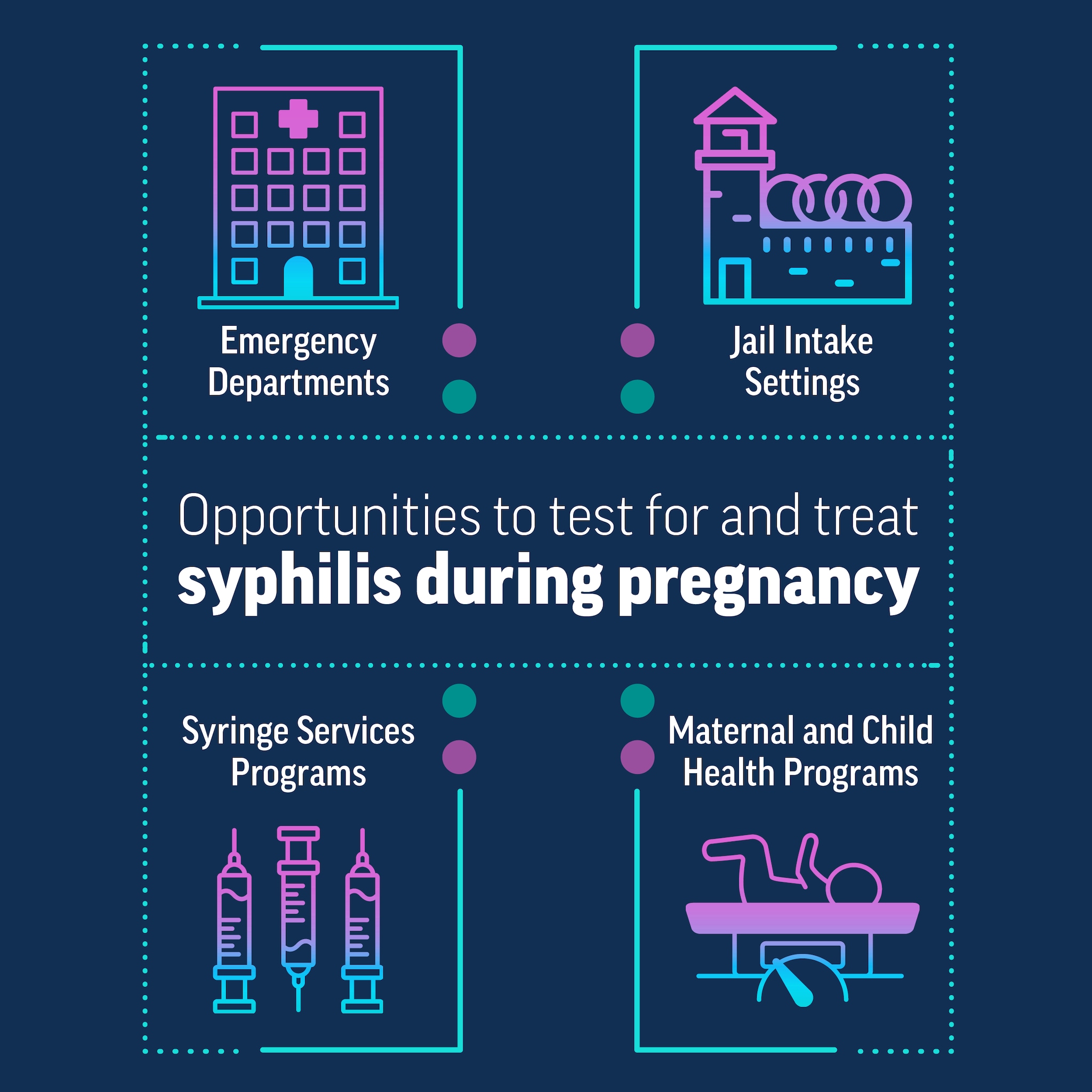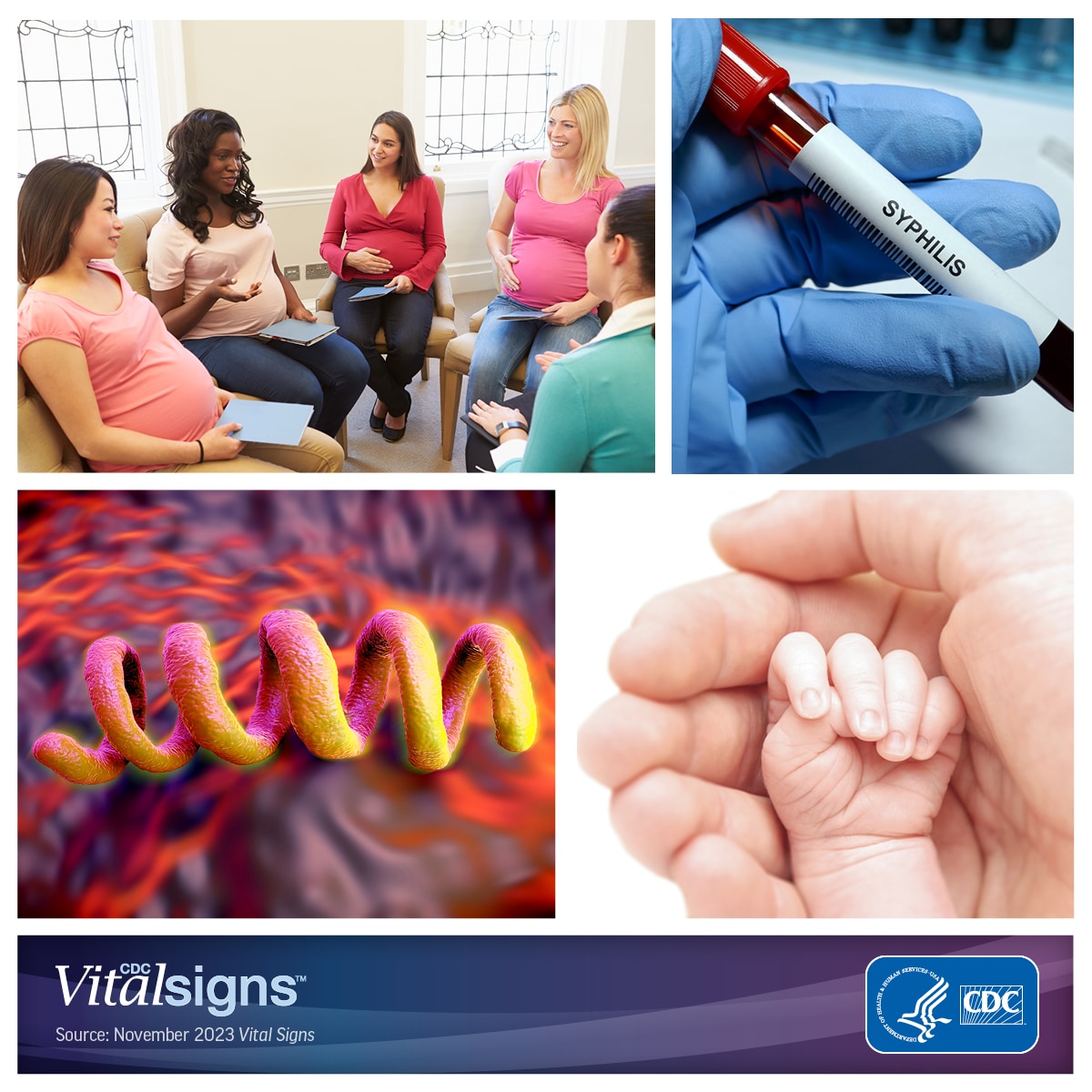Updated Dec. 14, 2023 | Print
10x
Over 10 times as many babies were born with syphilis in 2022 than in 2012.
9 in 10
Timely testing and treatment during pregnancy might have prevented almost 9 in 10 (88%) cases in 2022.
2 in 5
Two in 5 (40%) people who had a baby with syphilis did not get prenatal care.
Challenges
Missed opportunities during pregnancy can have tragic consequences
- Babies are born with syphilis when people are tested too late and not treated properly during pregnancy. Timely testing and treatment during pregnancy can help keep people healthy and might have prevented 9 out of 10 newborn syphilis cases in 2022.
- Late testing and treatment happen for different reasons depending on individual- and system-level barriers to care. Individual-level barriers include substance use disorder and lack of insurance. System-level barriers include systemic racism and limited healthcare access. Medication shortages now also threaten effective care. There is no one-size-fits-all solution to addressing these barriers. Knowing the data is critical for tailoring approaches.
- People are not always getting prenatal care. Two in 5 cases of babies born with syphilis happened in people who did not receive any prenatal care.
Over 10 Times as Many Babies Were Born with Syphilis in 2022 than in 2012
Increasing rates of syphilis among babies reflect a failure of the U.S. health system.
Timely Syphilis Testing and Treatment During Pregnancy Might Have Prevented Almost 90% of Cases
Newborn syphilis happens when syphilis is not identified and treated properly during pregnancy.
Any Healthcare Encounter During Pregnancy Is an Opportunity to Prevent Newborn Syphilis
Many settings provide opportunities to test for and treat syphilis during pregnancy.
email_03Vital Signs Update
Get email updates about Vital Signs
VITAL SIGNS RESOURCES







